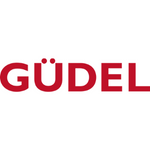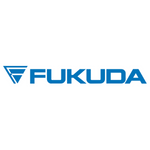The logistics market across Asia-Pacific, including India, China, and Southeast Asia, is experiencing robust growth, fueled by advancements in infrastructure, the rise of e-commerce, and the adoption of green and automated logistics practices. This comprehensive report provides a detailed analysis of key market statistics, forecasts, and performance metrics for various logistics segments, including warehousing, freight, cold chain, and third-party logistics (3PL), with data spanning from 2017 to projections for 2032.
Market Outlook
The report opens with a market snapshot, highlighting the primary growth drivers in the logistics sector, such as the increasing demand for reliable delivery services, the expansion of regional supply chains, and an industry shift towards sustainable logistics practices. These factors are especially impactful in e-commerce logistics, warehousing, and last-mile delivery segments, where demand is highest.
Key Market Statistics and Forecasts (2017-2032)
The report’s core provides extensive statistics on logistics spending, market sizes, and growth rates across various segments and regions. It examines the following in detail:
Logistics and Warehousing Market: The logistics and warehousing sectors in Asia are expanding rapidly, with significant emphasis on automation to increase operational efficiency and reduce costs.
Green Logistics and Robotics: Sustainability-focused logistics, including robotics for automated handling and reduced emissions, are gaining traction across APAC, China, and Southeast Asia.
Regional Market Performance: North America, APAC, Europe, and particularly China and Southeast Asia, lead in logistics innovations and demand due to their large e-commerce sectors and established manufacturing bases.
Sector-Specific Insights
This report explores key growth areas within logistics and warehousing, providing targeted insights by region and market type:
Third-Party Logistics (3PL): APAC, excluding China, has seen notable growth in 3PL market penetration, with companies increasingly outsourcing logistics to drive efficiency. China’s 3PL market is expanding as well, supported by rising industrial demand.
Cold Chain Logistics: Cold chain logistics is essential for industries requiring temperature-controlled storage, such as pharmaceuticals and perishables. China’s cold chain logistics segment is expected to grow substantially, with further expansion predicted through 2032.
Express Logistics and Last-Mile Delivery: These segments are growing in response to urbanization and increased e-commerce activity. In Southeast Asia and India, last-mile delivery startups are attracting significant venture funding, highlighting the importance of efficient, customer-focused logistics solutions.
Country/Region-Specific Insights for China, India, and Southeast Asia
The report provides granular insights into the logistics dynamics of major APAC regions:
China: China’s logistics market is expanding across various areas, including 3PL, cold chain, and end-to-end supply chain solutions. The market for logistics robots and automation is particularly strong, driven by the scale of its industrial and e-commerce sectors.
India: India’s logistics infrastructure improvements are bolstering growth, with significant investments in warehousing, highway construction, rail and air cargo handling, and port capacity. Venture funding is robust in logistics startups, with a focus on warehousing, transportation, and last-mile delivery.
Southeast Asia: Southeast Asia’s domestic logistics market has seen consistent growth, with key drivers including increased consumer demand, a rise in cross-border e-commerce, and investments in green logistics. The report highlights significant logistics spending in key trade lanes, along with automation in warehousing and on-demand logistics solutions.
Emerging Trends and Future Prospects
Key emerging trends include green logistics, driven by carbon reduction goals, and logistics automation across APAC, China, and Southeast Asia. The increasing demand for specialized logistics solutions, such as cold chain and pharmaceutical logistics, signals a shift toward service diversification. End-to-end supply chain solutions are also expected to grow in demand as companies focus on operational efficiency and cost management.
Conclusion
The Asia-Pacific logistics market, along with the growing logistics sectors in India, China, and Southeast Asia, is positioned for substantial transformation driven by technological advances and sustainability initiatives. This report outlines these trends, emphasizing opportunities for operational efficiency, automation, and infrastructure investment. With forecasts through 2032, it provides a detailed roadmap for businesses aiming to leverage the expanding logistics market across APAC and its subregions.
















